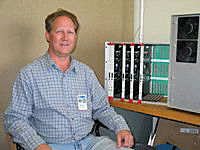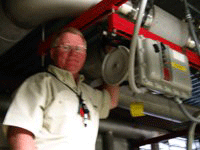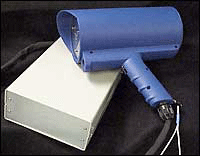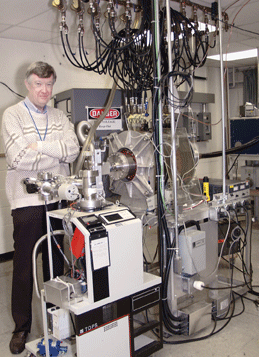| Research
|
|
|||||||||||||||||||||||||
|
PPPL researchers study
Hundreds of billions of plastic food and beverage containers are manufactured each year in the U.S. All of these packages must undergo sterilization, which at present is done using high temperatures or chemicals. But chemicals often leave a residue that can affect the safety and taste of the product and produce undesirable waste. Heat is effective, but necessitates the use of costly heat-resistant plastics that can withstand sterilization temperatures. What if a new method could be found that eliminated the need for chemicals or heat-resistant plastics? A plasma, a hot ionized gas, just might be the answer. At DOE's Princeton Plasma Physics Laboratory, a team is conducting a small-scale research project studying plasma sterilization. “We have experiments indicating it is possible to kill microbes using a new plasma approach,” noted John Schmidt, lead scientist of PPPL's Plasma Sterilization project. Schmidt cautioned, however, that the research is preliminary. In the PPPL experiment, a one-inch-diameter metal sphere, with a known number of non-toxic spores on its surface, is mounted at the center of a vacuum chamber. After an experiment, the number of spores killed is determined. PPPL researchers start with “low-temperature” hydrogen plasmas in the range of 50,000 degrees centigrade. At that temperature, the hydrogen ions are moving much too slowly to kill spores quickly. Rapidly pulsing a 50-kilovolt potential between the sphere and the vacuum chamber solves the problem. The sphere is charged negatively and the vessel is at ground. Under these circumstances, the positively charged hydrogen ions accelerate toward the sphere in pulses energetic enough for the ions to pierce the hard outer shell and soft inner core of the spore. Recent experiments employed 4,000 10-microsecond pulses, which reduced the population of live spores by a factor of 100-1000. Submitted by DOE's
Princeton Plasma |




